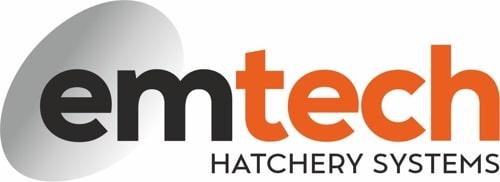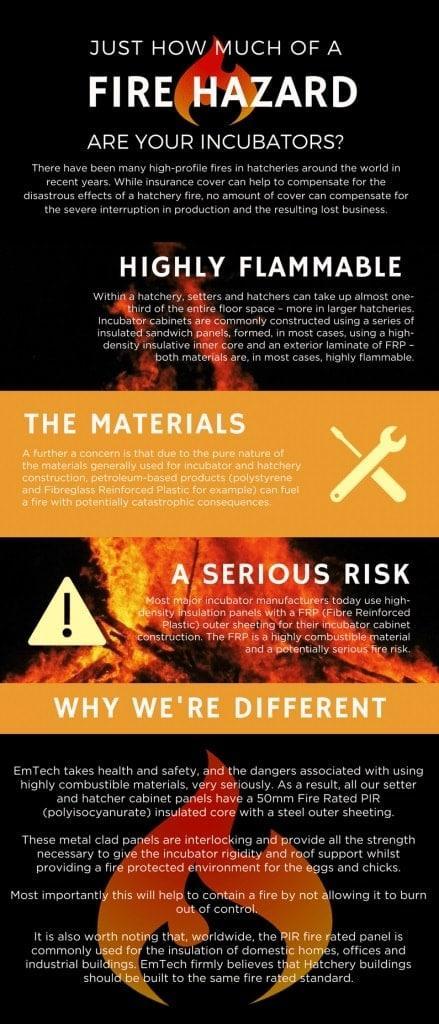Over the past years, significant losses have occurred around the world. These losses are all associated with the damage and disruption caused by large-scale fires. The common feature? Composite panels.
Many of these risks are relative to risks found within hatcheries, poultry processing plants and the food manufacturing sector in general. This is becoming an increasing issue. One, that is a growing concern for health and safety institutions and insurers alike.
For the past 25-30 years, polymeric core sandwich panels (predominately expanded polystyrene EPS) have been used for both the building’s external envelope and for internal partitioning, ceilings, and cabinets. As such, it has now become the dominant core insulant in food-related factories. This is due to the lightweight build speed (in comparison to rock fibre mineral wool cores), installation cost and resistance to moisture penetration. Additionally, hygiene considerations and cost both play a part.
Traditionally, the inner core would be metal faced, providing the panel with a fire-retardant surface on both sides. Conversely, fibre reinforced plastic (FRP) surfaces are rarely considered as they provide no fire resistance and are highly inflammable.
Can sandwich panels start fires?
Sandwich panels do not start fires on their own. However, they can support and fuel a fire; accelerating it’s spread if their composition has little or no fire resistance. Unlike sandwich panels that are used for external cladding; those which are used internally in the construction of incubator cabinets, cold stores, partitions, and ceilings are in most cases, unsupported.
In addition, the panel, when exposed to the high temperatures of a developed fire, will tend to delaminate between the facing and core material, due to expansion. Irrespective of the internal core material, this will, in turn, expose the insulation core to the naked fire. If the core composition is expanded polystyrene (EPS) or a similar, non-fire-retardant material (e.g. polyurethane (PUR)), this would have the same effect as pouring petrol directly onto the fire.
The benefits of PIR
In many countries, influence from insurers and technical development within the composite panel industry have led to the cores of polymer-cored insulation panels changing. What was originally made of PUR, now consists of polyisocyanurate (PIR). As a result, the risk of a fire hazard is decreased.
It is a known fact that stone wool insulation has the highest safety rating of all insulation materials. However, unfortunately, this product is not convenient in all respects. And, it is certainly not suitable for the construction of an incubator cabinet.
Polyisocyanurate (PIR) is recognized as having the highest fire safety rating of all polymeric foam materials. Moreover, it has 30% greater thermal insulation properties compared to an equivalent EPS panel.
The safety of not only the hatchery workers but also that of emergency service personnel that may have to tend to the fire is a top priority in the design of today’s modern hatchery. Consideration should always be given to creating fire breaks. Therefore, you must choose compartmental walls carefully to ensure suitability.
Sandwich panels with a high density (HD) rock-fibre mineral wool core with external metal skin surfaces are commonly used for this application. This is because these can easily provide panels with up to 240 minutes fire resistance. Where composite panels are utilized to create ceilings and additional partition walls within the building, these should be of metal skinned PIR or better to maximise the fire resistance.
How EmTech mitigates the risk
Unlike any other incubator manufacturer, EmTech recognizes this huge threat. And, as a result, now make PIR sandwich panels with metal outer surfaces a standard feature in the production of all our incubator cabinets. We even conducted a test to see the difference in fire resistance between standard EPS panels and our own PIR panels.
The threat of a fire in action
Construction methods, choice of materials and compliance with health and safety are all extremely important issues today.
Several years ago, a food production facility felt the effects of this themselves. Following a fire at the facility, and with almost a £20 million loss, the court found considerable negligence by the occupant. However, it was the architect who faced civil court judgement for specifying the use of internal EPS-cored composite panels.
Fortunately, there was no loss of life or personal injury in the fire. The building was provided with adequate means of escape. The premises had a fire certificate and there was no question of a breach of the building regulation or any other statutory requirement.
However, the judge did not agree that the defendant had fully performed their duties, simply because they had complied with all requirements or that there had been no injuries or loss of life. In other words, close to the frequent thief’s submission that the only people to suffer from his activities are insurers.
This excuse is no longer acceptable. It now makes it clear that the protection from fire is also an obligation for the architect/supplier. The view that the building is sacrificial in fire incidents, provided there are no threats to persons, is no longer sustainable.
EmTech endeavour to help and guide customers. Not only in creating the most efficient and bio-secure environment for incubating chicks but, equally importantly, how to ensure the design and construction provide the safest working environment for operatives.
If you’d like to hear more about EmTech’s products and our hatchery design services, get in touch!



